3.7: Portion Distortion
- Page ID
- 14079
\( \newcommand{\vecs}[1]{\overset { \scriptstyle \rightharpoonup} {\mathbf{#1}} } \)
\( \newcommand{\vecd}[1]{\overset{-\!-\!\rightharpoonup}{\vphantom{a}\smash {#1}}} \)
\( \newcommand{\id}{\mathrm{id}}\) \( \newcommand{\Span}{\mathrm{span}}\)
( \newcommand{\kernel}{\mathrm{null}\,}\) \( \newcommand{\range}{\mathrm{range}\,}\)
\( \newcommand{\RealPart}{\mathrm{Re}}\) \( \newcommand{\ImaginaryPart}{\mathrm{Im}}\)
\( \newcommand{\Argument}{\mathrm{Arg}}\) \( \newcommand{\norm}[1]{\| #1 \|}\)
\( \newcommand{\inner}[2]{\langle #1, #2 \rangle}\)
\( \newcommand{\Span}{\mathrm{span}}\)
\( \newcommand{\id}{\mathrm{id}}\)
\( \newcommand{\Span}{\mathrm{span}}\)
\( \newcommand{\kernel}{\mathrm{null}\,}\)
\( \newcommand{\range}{\mathrm{range}\,}\)
\( \newcommand{\RealPart}{\mathrm{Re}}\)
\( \newcommand{\ImaginaryPart}{\mathrm{Im}}\)
\( \newcommand{\Argument}{\mathrm{Arg}}\)
\( \newcommand{\norm}[1]{\| #1 \|}\)
\( \newcommand{\inner}[2]{\langle #1, #2 \rangle}\)
\( \newcommand{\Span}{\mathrm{span}}\) \( \newcommand{\AA}{\unicode[.8,0]{x212B}}\)
\( \newcommand{\vectorA}[1]{\vec{#1}} % arrow\)
\( \newcommand{\vectorAt}[1]{\vec{\text{#1}}} % arrow\)
\( \newcommand{\vectorB}[1]{\overset { \scriptstyle \rightharpoonup} {\mathbf{#1}} } \)
\( \newcommand{\vectorC}[1]{\textbf{#1}} \)
\( \newcommand{\vectorD}[1]{\overrightarrow{#1}} \)
\( \newcommand{\vectorDt}[1]{\overrightarrow{\text{#1}}} \)
\( \newcommand{\vectE}[1]{\overset{-\!-\!\rightharpoonup}{\vphantom{a}\smash{\mathbf {#1}}}} \)
\( \newcommand{\vecs}[1]{\overset { \scriptstyle \rightharpoonup} {\mathbf{#1}} } \)
\( \newcommand{\vecd}[1]{\overset{-\!-\!\rightharpoonup}{\vphantom{a}\smash {#1}}} \)
\(\newcommand{\avec}{\mathbf a}\) \(\newcommand{\bvec}{\mathbf b}\) \(\newcommand{\cvec}{\mathbf c}\) \(\newcommand{\dvec}{\mathbf d}\) \(\newcommand{\dtil}{\widetilde{\mathbf d}}\) \(\newcommand{\evec}{\mathbf e}\) \(\newcommand{\fvec}{\mathbf f}\) \(\newcommand{\nvec}{\mathbf n}\) \(\newcommand{\pvec}{\mathbf p}\) \(\newcommand{\qvec}{\mathbf q}\) \(\newcommand{\svec}{\mathbf s}\) \(\newcommand{\tvec}{\mathbf t}\) \(\newcommand{\uvec}{\mathbf u}\) \(\newcommand{\vvec}{\mathbf v}\) \(\newcommand{\wvec}{\mathbf w}\) \(\newcommand{\xvec}{\mathbf x}\) \(\newcommand{\yvec}{\mathbf y}\) \(\newcommand{\zvec}{\mathbf z}\) \(\newcommand{\rvec}{\mathbf r}\) \(\newcommand{\mvec}{\mathbf m}\) \(\newcommand{\zerovec}{\mathbf 0}\) \(\newcommand{\onevec}{\mathbf 1}\) \(\newcommand{\real}{\mathbb R}\) \(\newcommand{\twovec}[2]{\left[\begin{array}{r}#1 \\ #2 \end{array}\right]}\) \(\newcommand{\ctwovec}[2]{\left[\begin{array}{c}#1 \\ #2 \end{array}\right]}\) \(\newcommand{\threevec}[3]{\left[\begin{array}{r}#1 \\ #2 \\ #3 \end{array}\right]}\) \(\newcommand{\cthreevec}[3]{\left[\begin{array}{c}#1 \\ #2 \\ #3 \end{array}\right]}\) \(\newcommand{\fourvec}[4]{\left[\begin{array}{r}#1 \\ #2 \\ #3 \\ #4 \end{array}\right]}\) \(\newcommand{\cfourvec}[4]{\left[\begin{array}{c}#1 \\ #2 \\ #3 \\ #4 \end{array}\right]}\) \(\newcommand{\fivevec}[5]{\left[\begin{array}{r}#1 \\ #2 \\ #3 \\ #4 \\ #5 \\ \end{array}\right]}\) \(\newcommand{\cfivevec}[5]{\left[\begin{array}{c}#1 \\ #2 \\ #3 \\ #4 \\ #5 \\ \end{array}\right]}\) \(\newcommand{\mattwo}[4]{\left[\begin{array}{rr}#1 \amp #2 \\ #3 \amp #4 \\ \end{array}\right]}\) \(\newcommand{\laspan}[1]{\text{Span}\{#1\}}\) \(\newcommand{\bcal}{\cal B}\) \(\newcommand{\ccal}{\cal C}\) \(\newcommand{\scal}{\cal S}\) \(\newcommand{\wcal}{\cal W}\) \(\newcommand{\ecal}{\cal E}\) \(\newcommand{\coords}[2]{\left\{#1\right\}_{#2}}\) \(\newcommand{\gray}[1]{\color{gray}{#1}}\) \(\newcommand{\lgray}[1]{\color{lightgray}{#1}}\) \(\newcommand{\rank}{\operatorname{rank}}\) \(\newcommand{\row}{\text{Row}}\) \(\newcommand{\col}{\text{Col}}\) \(\renewcommand{\row}{\text{Row}}\) \(\newcommand{\nul}{\text{Nul}}\) \(\newcommand{\var}{\text{Var}}\) \(\newcommand{\corr}{\text{corr}}\) \(\newcommand{\len}[1]{\left|#1\right|}\) \(\newcommand{\bbar}{\overline{\bvec}}\) \(\newcommand{\bhat}{\widehat{\bvec}}\) \(\newcommand{\bperp}{\bvec^\perp}\) \(\newcommand{\xhat}{\widehat{\xvec}}\) \(\newcommand{\vhat}{\widehat{\vvec}}\) \(\newcommand{\uhat}{\widehat{\uvec}}\) \(\newcommand{\what}{\widehat{\wvec}}\) \(\newcommand{\Sighat}{\widehat{\Sigma}}\) \(\newcommand{\lt}{<}\) \(\newcommand{\gt}{>}\) \(\newcommand{\amp}{&}\) \(\definecolor{fillinmathshade}{gray}{0.9}\)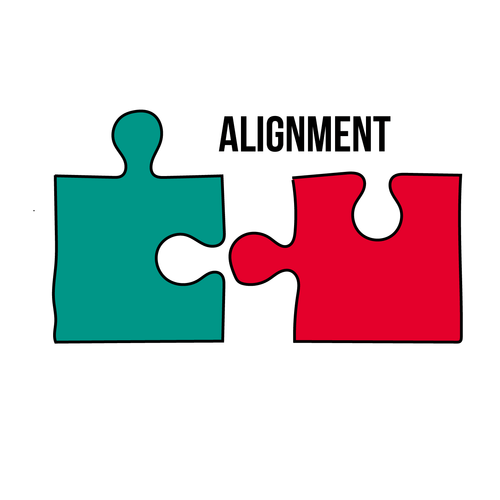
National Health Education Standards (NHES)
- 2.12.7 Analyze how the perceptions of norms influence healthy and unhealthy behaviors.
Wellness Guidelines
- Decrease fast food consumption

- Instruction: In a group or think-pair-share format, have participants discuss the following questions. Acknowledge those who have progressed toward their goal(s) and encourage anyone who wants to change or modify their goal to get 1:1 support.
- Share: Let’s discuss our SMART Goals.
- How is it going with your current SMART goal?
- What are some ways you can improve progress towards your goal? (Grows)
- What are some ways you are doing well with progress towards your goal? (Glows)
GUIDELINE: Decrease fast food consumption
- Share: What guideline do you think is related to today’s lesson? Who has a SMART Goal related to this guideline?
- Instruction: Select one activity.
- Guideline Popcorn: The group lists all 8 guidelines rapidly in popcorn format.
- Guideline Charades: Divide participants into groups and assign each a guideline. Each group has to silently act out the guideline for the rest to guess.
- Two Truths and One Lie:
- Truth 1: The amount and size of the food portions have changed over the years.
- Truth 2: Most people can eat three balanced meals a day plus two snacks.
- Lie: One bag of chips is one serving.
- Share: One package of food does not necessarily equal to one serving size. In fact, most of the time, there are more than one serving per package!
- Questions to discuss and/or journal:
- Are you always hungry when you eat?
- What are the common reasons that you eat? Why?
- What are the common reasons that you overeat? Why?
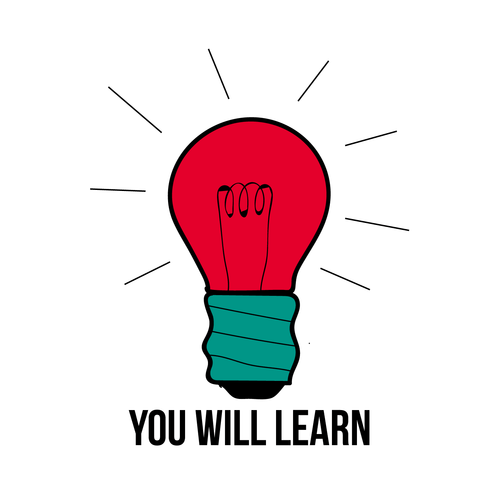
- Why it is important to eat the right portion and to eat mindfully.
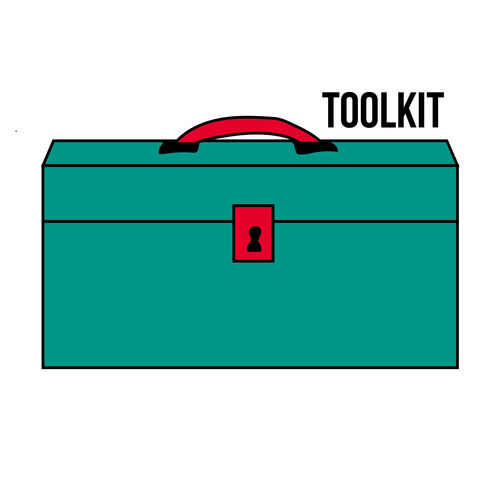
- Worksheets
- Slide presentation
- Cereals (inside their original containers)
- Dark chocolate
- Two different sized bowls (the larger the size difference, the better)
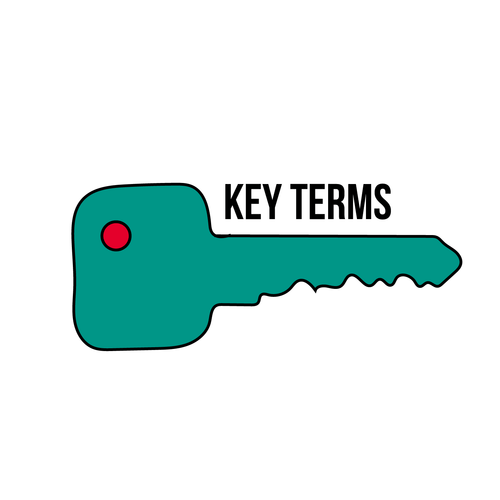
[As defined by: NIH, 2013; USDA & HHS, 2015]
- Overeat: To eat more than is needed or more than is healthy.
- Portion Size: The amount of food that you choose to eat for a meal or snack.
- Serving Size: A standardized amount of food, such as a cup or an ounce, that can help you calculate the calories and nutrients in that food.
- Calorie: A unit commonly used to measure the energy content of foods and beverages as well as energy use by the body.
- Mindful Eating: A practice used to help us become more aware of what our body and mind are telling us about our food choices.
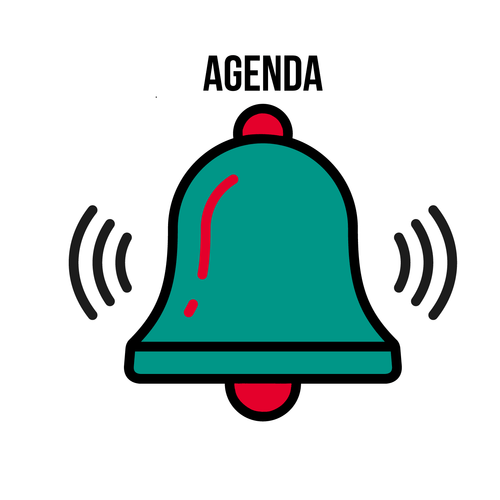
- Do Now
- A Reality Check on Portion Sizes
- Don’t Make It a Cereal Problem
- Mindful Eating is Sweet
- Exit Ticket
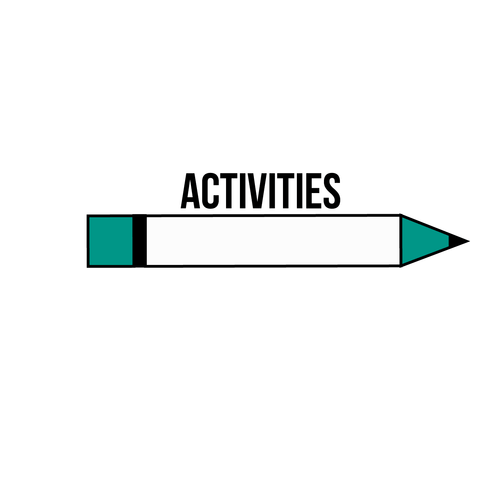
Do Now:
- Instruction:
- Have participants answer the following question on their worksheet or by sharing out loud.
- What does overeating mean to you?
- How do you know when you’ve overeaten?
- How do you feel when you overeat?
- Have you ever eaten for other reasons besides hunger? If so, what was the reason (bored, stressed, etc.)? How did you feel after you ate?
- Share:
- To overeat is to eat more than is needed or more than is healthy.
- Overeating can feel uncomfortable and have less energy(CDC, 2016).
- Today we are going to learn about what our portion sizes should be in order to eat just enough to help keep your body at its healthiest size.
- What is the difference between the portion and serving sizes?
- Portion size is the amount of food that you choose to eat for a meal or snack (NIH, 2013). It can be big or small, you decide. It is not a standardized amount, and therefore, it is different than the serving size.
- The serving size is a standardized amount of food, such as a cup or an ounce, that can help you calculate the calories and nutrients in that food (USDA & HHS, 2015).
- The number and size of portions will add up to the number of calories you are eating. Remember, calories give your body energy like gasoline gives energy to a car.
- We gain calorie by eating food! How many calories a person needs depends on their age, gender, height, weight, and activity level, but the average person needs about 2,000 calories.
- The number of calories are different for everyone which helps determine the number and size of the portions you will eat to help keep your body at its healthiest size.
- Understand how to determine the healthiest number and size of portions you should eat will help you give your body the right amount of energy it needs.
Good to Know: A Reality Check on Portion Sizes
- Share:
- Since 1954, Americans have increased the number of calories consumed by 25%.
- Average portion sizes have grown so much over the past 20 years that sometimes the plate arrives and there’s enough food for two or even three people on it.
- The food industry increased the portion size of food as well as the amount of sugar, salt, and fat in many processed foods, so although we are eating only one item, we may be taking in more calories than we need.
- The growing portion sizes are also changing what Americans think of as a “normal” portion. That’s what we call portion distortion (NIH, 2013)!
- Why should we care? Research has shown that people unintentionally consume more calories when faced with larger portions (CDC, 2016).
- Instruction:
- Show images of how portions have increased over the past 20 years in the slide presentation. Ask participants to share their thoughts on this image. What are the consequences of the portion increase? Is the increase in portion size for the better or worse? Why?
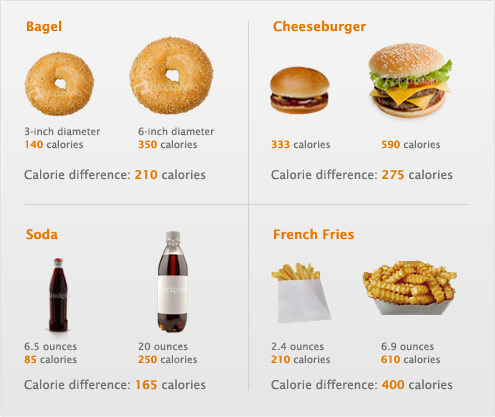 Image adapted from: https://www.nhlbi.nih.gov/health/edu...uments/PD1.pdf
Image adapted from: https://www.nhlbi.nih.gov/health/edu...uments/PD1.pdf- Share:
- However, not only has the portion size increased, but the serving size has also changed over the years.
- In fact, one of the changes in the new nutrition label is an update on serving sizes since how much people eat/drink has changed since the older nutrition label was first published in 1993.
- For example, the reference amount used to set a serving of ice cream was previously 1/2 cup but is changing to 2/3 cup. The reference amount used to set a serving of soda is changing from 8 ounces to 12 ounces. These changes reflect the changes in how Americans are consuming these foods.
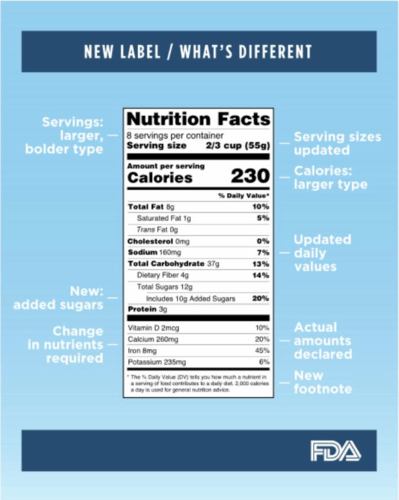 Image from: www.fda.gov/downloads/Food/G...nceRegulation/ GuidanceDocumentsRegulatoryInformation/LabelingNutrition/UCM501663.pdf
Image from: www.fda.gov/downloads/Food/G...nceRegulation/ GuidanceDocumentsRegulatoryInformation/LabelingNutrition/UCM501663.pdfHands On: Don’t Make It a Cereal Problem
- Instruction:
- Have participants pour out the typical amount of cereal they eat in the morning.
- Ask them to read the serving size information on the cereal’s nutrition label.
- Share:
- As you may have noticed, the amount of food in a package may contain more than one serving.
- If we eat the whole package, we are eating several serving sizes.
- Another example is sweet tea. The serving size is 8 fluid ounces, but there are actually 3 servings per container. That means you have to multiply the information on its nutrition label (such as calories) by 3!
- What can you do to help yourself eat smaller portions?
- Include protein foods, whole grains, and fiber in your diet to help your body to feel satisfied and full. For example, add a sliced banana to your morning cereal.
- Sometimes you really need more food to energize your body. Try to eat smaller portions of the not-so-healthy foods and larger portions of the healthier food choices.
- When you don’t create your own plate and are eating out, divide your food in half. Enjoy half in the restaurant and the other half at home the next day. You can also tell the server you want to share the meal with your friend. The single large portion will be served on two plates with a more appropriate individual portion size.
- Share snacks with your friends and bring healthier snacks when you go out to different events and places that may not have healthy snacks as options (e.g. movie theater, sports game, friend’s house, etc.)
- Use smaller containers. Eat or drink from smaller plates, bowls, or cups instead of directly out of the package or container. The size of the container that you eat from matters! Let’s take a look (CDC, 2016).
- Instruction:
- Pour out two bags of chips into one bigger bowl and one smaller bowl. Ask the group which bowl looks like it has more chips.
- Share:
- Even though both bowls have the same amount of chips, it seems like there’s more in the smaller bowl.
- You can trick your mind into thinking that there’s more food by simply being smart about which container you choose to eat from. Try using this simple trick the next time you have a snack!
Real World Relevance: Mindful Eating is Sweet
- Share:
- Have you heard of mindful eating? Mindful eating is a practice used to help us become more aware of what our body and mind are telling us about our food choices.
- Mindful eating helps us listen to what our body is telling us about hunger and satisfaction, and it encourages us to use all our senses when choosing what we want to put into our body.
- Becoming more mindful of whether or not you actually are hungry and for what foods is the first step in practicing mindful eating. It helps us become aware of what our body wants and needs, and what foods can best nourish it.
- Here are a few simple tips to help you eat more mindfully (CDC, 2016):
- Speed: Slow down! Take smaller bites/sips and finish each bite/sip before taking another. Appreciate each bite. Put down the utensil or cup in between bites or sips. Drink water before/while eating. Hunger signal can mean a thirsty signal sometimes and it takes 20 minutes for your body to recognize the food is there.
- When: Eat three balanced meals a day plus two snacks, so you’re eating every 3-4 hours. Do not skip meals or wait too long between meals.
- Environment: Avoid distractions like watching TV, texting, playing on the phone, etc. while you’re eating. Instead, create relaxed environments. You can also try to eat with others and have a conversation during the meal.
- Why: Ask yourself why you are eating. Because you’re hungry to feel better? Or because you’re sad, angry, bored, etc.? Eat because you’re hungry, not because you are trying to avoid emotions. Recognize your natural hunger signs.
- Out of sight, out of mind: People tend to consume more when they have easy access to food. Make your home a "portion friendly zone” with a few tricks: replace candy dish bowls with healthier options (like fruit bowls), store tempting foods on a high shelf or the back of the fridge, and move healthier foods to easy-to-reach spaces.
- Beware of packaging: or some reason, the larger the package, the more people consume from it without realizing it. To avoid this, try dividing up the contents of one large package into smaller containers and avoid eating straight from the package.
- Instruction:
- Hand out a small piece of dark chocolate to every participant.
- Share:
- Now, let’s practice mindful eating with a small treat!
- Please feel free to go at your own pace during this exercise.
- First, feel the weight of the dark chocolate in your hand, and take a look at it. What do you notice about its color? It's shaping?
- Unwrap the piece of dark chocolate. Again, what do you notice about its color? It's shaping?
- Smell the dark chocolate.
- Put the dark chocolate in your mouth.
- Take your time to taste the dark chocolate and let it melt. What do you notice about the changing texture?
- Notice the aftertaste that it leaves in your mouth. What is it like?
- We did this activity with dark chocolate because a small amount of dark chocolate is good for you! It may increase blood flow through your heart, lower your blood pressure, and even improve your mood (Harvard School of Public Health, n.d.).
- However, you may not want to eat the whole bar of dark chocolate in one sitting. Moderation is key.

Exit Ticket:
- Instruction:
- Have participants write on their worksheet or share out loud the following question(s).
- What is a tip you are going to try so that you are eating the right portion?
- What is a tip you are going to try so that you are mindfully eating?
- What might make it hard for you to try mindful eating?
- Have participants write on their worksheet or share out loud the following question(s).

- Centers for Disease Control and Prevention. (2016). How to Avoid Portion Size Pitfalls to Help Manage Your Weight. Retrieved From: https://www.cdc.gov/healthyweight/he...tion_size.html
- Harvard School of Public Health. (n.d.). Dark chocolate. Retrieved From: https://www.hsph.harvard.edu/nutriti...ark-chocolate/
- National Heart, Lung, and Blood Institute. (2013). Portion Distortion. Retrieved From: https://www.nhlbi.nih.gov/health/edu...distortion.htm
- S. Food & Drug Administration. (2016). Food serving sizes get a reality check. Retrieved From: www.fda.gov/ForConsumers/Con.../ucm386203.htm
- S. Food & Drug Administration. (2018). Changes to the Nutrition Facts Labels. Retrieved From: https://www.fda.gov/Food/GuidanceReg.../ucm385663.htm
- S. Department of Agriculture & U.S Department of Health and Human Services. (2015). Dietary Guidelines for Americans. Retrieved From: https://health.gov/dietaryguidelines...Guidelines.pdf
- National Institutes of Health. (n.d.). Portion Size Matters. Retrieved From: https://www.nhlbi.nih.gov/health/edu...rtion-size.pdf
This lesson was created in partnership with Albert Einstein College of Medicine Department of Epidemiology and Population Health with funding support by the National Institutes of Health NIDDK Grant R01DK097096.

